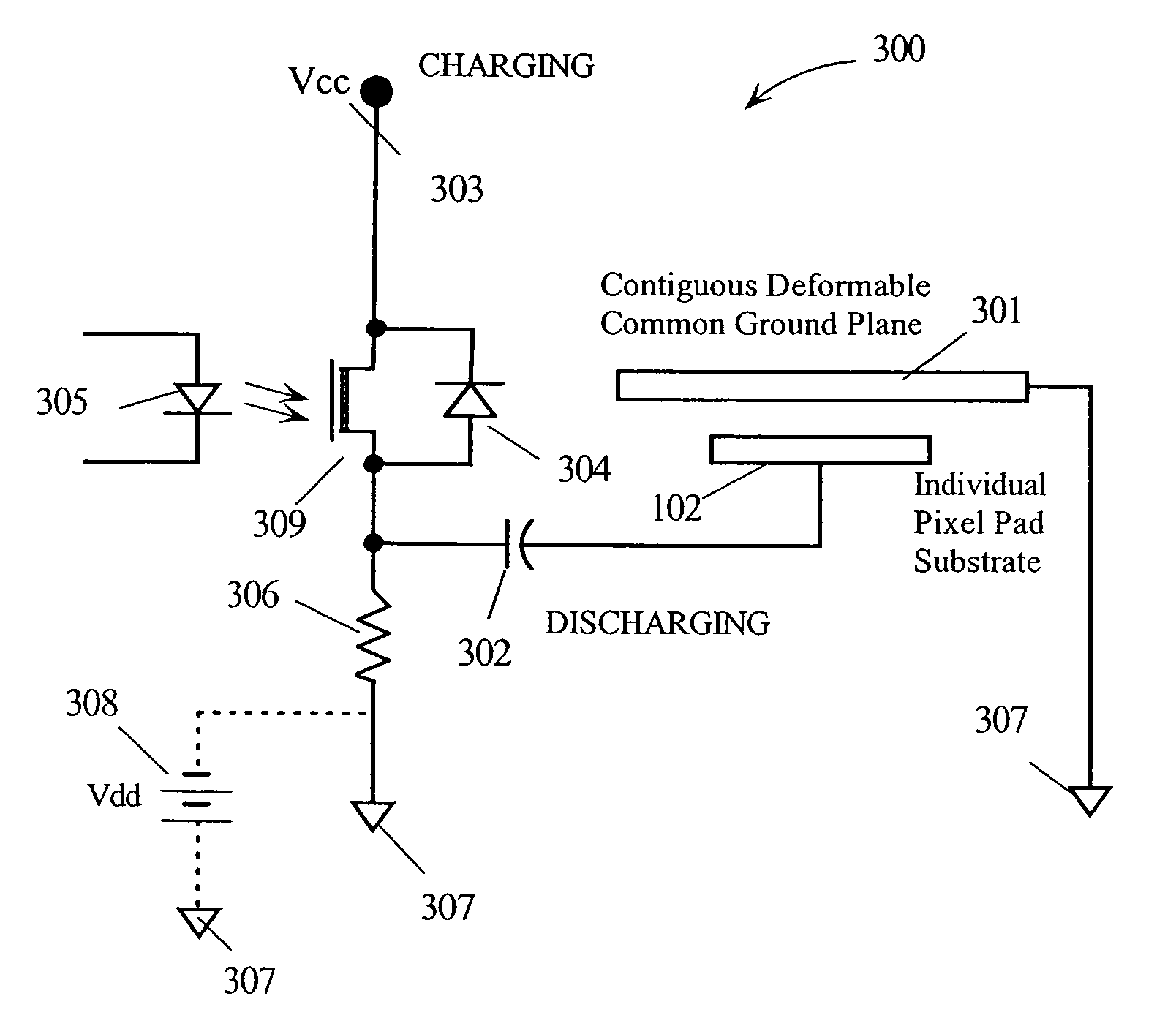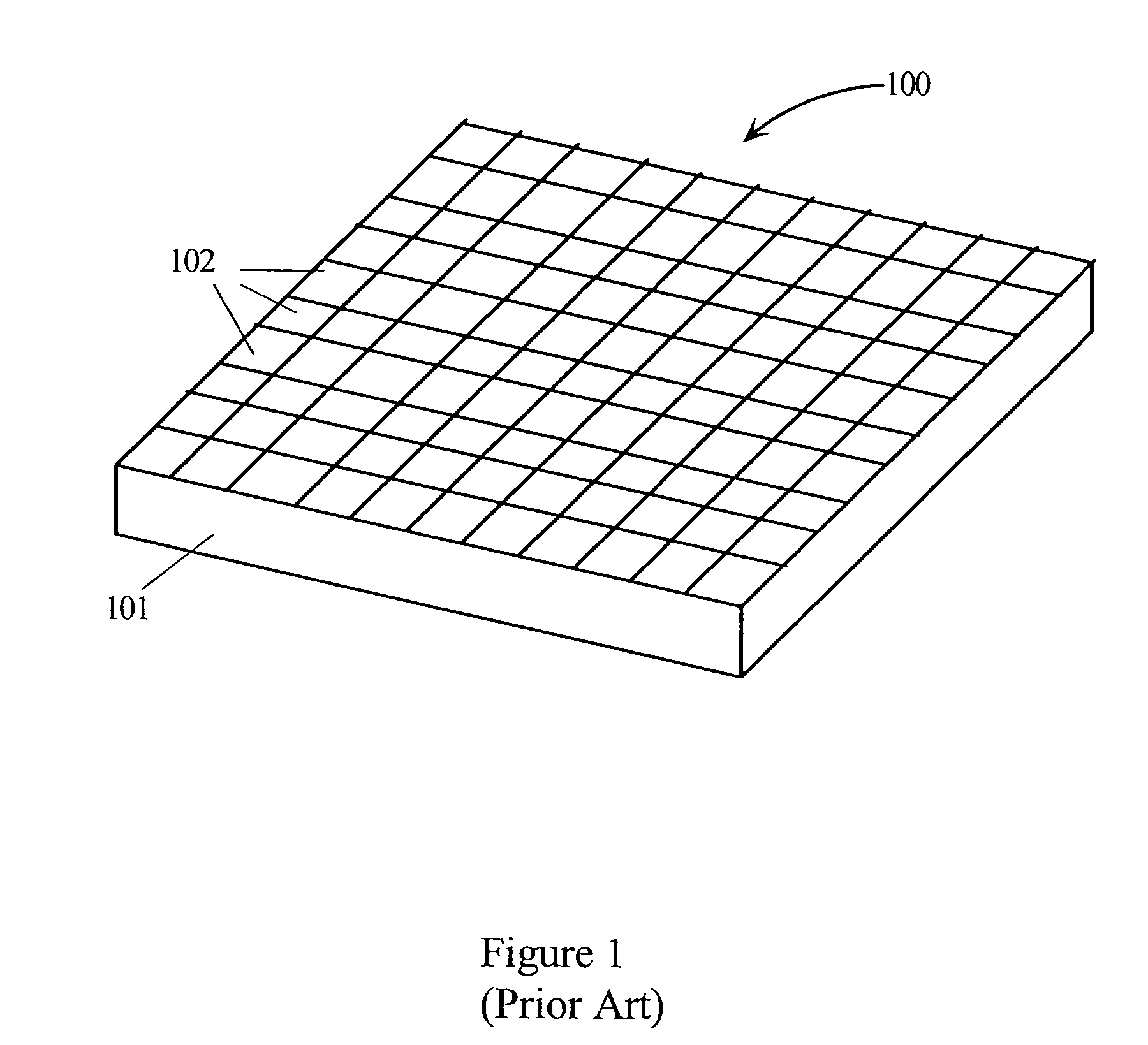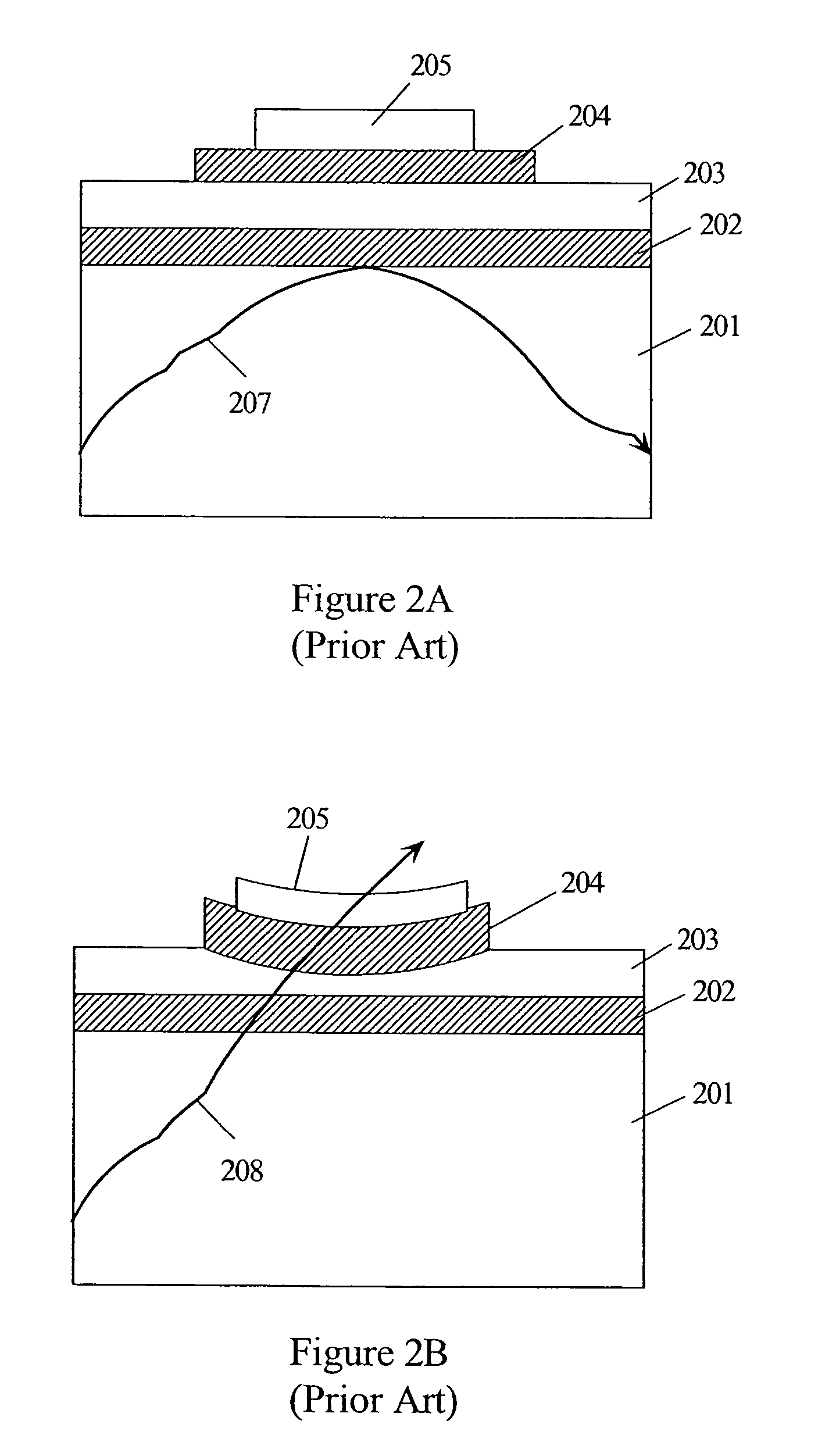Enhancements to optical flat panel displays
a flat panel display and flat panel technology, applied in the field of flat panel displays, can solve the problems of large number of top and bottom plates not being able to coincide geometrically, difficult to achieve the discrete top and bottom capacitor plates, and increasing difficulty in achieving them. to achieve the effect of expanding the color pal
- Summary
- Abstract
- Description
- Claims
- Application Information
AI Technical Summary
Benefits of technology
Problems solved by technology
Method used
Image
Examples
Embodiment Construction
[0054]The present invention comprises a circuit to implement a registration-free, contiguous conductive plate that is itself flexible and capable of plate bending motion. In one embodiment of the present invention, a circuit may comprise a plurality of conductive structures in a first plane. The circuit may further comprise a contiguous conductive equipotential surface in a second plane parallel to the first plane. The circuit may further comprise activation means configured to adjust an electric field between the first and second planes thereby activating one or more structures in the first plane by increasing a potential difference between the first and second planes to a threshold level deemed to constitute an active state. The circuit may further comprise deactivation means configured to adjust the electric field between the first and second planes thereby deactivating one or more structures in the first plane by decreasing the potential difference between the first and second p...
PUM
 Login to View More
Login to View More Abstract
Description
Claims
Application Information
 Login to View More
Login to View More - R&D
- Intellectual Property
- Life Sciences
- Materials
- Tech Scout
- Unparalleled Data Quality
- Higher Quality Content
- 60% Fewer Hallucinations
Browse by: Latest US Patents, China's latest patents, Technical Efficacy Thesaurus, Application Domain, Technology Topic, Popular Technical Reports.
© 2025 PatSnap. All rights reserved.Legal|Privacy policy|Modern Slavery Act Transparency Statement|Sitemap|About US| Contact US: help@patsnap.com



